
Fiber Optic Workforce Development
For Fiber Broadband
Broadband And Fiber Optics
The Role of The Fiber Optic Association (FOA)
The Fiber Optic Workforce and the BLS Telecom Tech
How Do Fiber Techs Learn?
FOA’s Experience In Recruiting, Training and Certifying Fiber Optic Techs
Workforce Development Requires A Cooperative Effort
Certifying Fiber Optic Techs
About The FOA
FOA Resources
Introduction
Everywhere you look, there seems to be an article on broadband workforce development, understanably since there are multiple job openings for every person seeking employment in the US. Nowhere will this be more critical than in fiber optics, considering all the funding becoming available for building new fiber broadband networks. Nobody knows more about fiber optic workforce development than FOA - it's what we've been doing for the last quarter century! So we're going to share what we know to help everybody build the fiber optic workforce we need.

In a world of electronic devices that all depend on communications, fiber optics is the technology that provides the backbone of every communications network. Yes, that even includes wireless devices, where devices connect over radio signals to local antennas which then rely on fiber optic connections to telecom networks and other wireless antennas.
Besides the obvious connections to the Internet and wireless networks, fiber optics is the medium used in many other fields – cable TV, connecting utility grids, smart traffic lights, surveillance cameras, and hundreds of other applications often called "the Internet of things." Even movies shot on digital cameras today send the day’s “rushes” from the sound stage to the studios on fiber optics.
With all this dependence on fiber optics, the personnel who design, install and operate fiber optic networks have become essential workers. In a labor market where current workers are aging out and multiple job openings exist for every worker seeking employment, that brings up a very big problem.
Where do we find the workers who will build these fiber optic networks?
Broadband And Fiber Optics
Why US Funding Programs For Broadband Will Need A Bigger And Better Fiber Optic Workforce
“Broadband” is the term everybody Is using to mean a high speed connection to the Internet, whether it be with a smartphone, tablet, PC or any other connected device. The pandemic made broadband more important, a requirement for working at home, learning at home, shopping at home and gaming at home. The other end of the connection needs broadband too; it’s a “2-way street” so to speak.
What makes a network “broadband”? Broadband refers to high speed Internet service based on fiber optics, high speed communications carried by light signals over hair-thin strands of glass. Fiber optics is the technology that made the Internet possible and today provides the backbone for not only the Internet but also wireless communications, cable TV, electrical smart grid, intelligent traffic systems, etc.
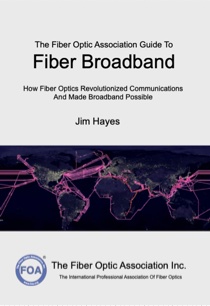
What is broadband? FOA has written a book to explain what broadband is and how it depends on a fiber optic infrastructure - even wireless needs fiber. Ask for a copy.
As we became more aware of the importance of broadband, it became apparent that many areas of the US do not have broadband, even if they have Internet connections, because the technology serving them is too slow, too expensive or nonexistent.
The US government has recognized this and responded with the Infrastructure Investment and Jobs Act (IIJA is the usual jargon now) that funds over $1 trillion in infrastructure projects and includes the Broadband Equity Access and Development program (BEAD).
The IIJA includes many other infrastructure categories as well as broadband –transportation including roads, bridges, rail, airports, ports and public transit, power and electrical grids, water and waste systems, etc. FOA is involved in all those areas because fiber optics is needed for communications in each of them.
BEAD and several other programs for broadband will be funded through the National Telecommunications and Information Administration (NTIA) and provide funding through state agencies for projects to build broadband for unserved and underserved areas.
When we read documents like the NTIA Notice of Funding Opportunity, we note that:
- broadband networks that will be funded will be based on fiber optics
- technicians that build them must be certified.
The Role Of The Fiber Optic Association
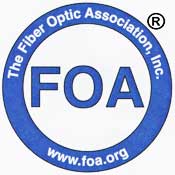
The Fiber Optic Association (FOA), the non-profit international professional association of fiber optics, was founded in 1995 by the industry to “promote professionalism in fiber optics through education, certification and standards.” We’re a recognized certifying body for fiber optic technicians worldwide, having certified about 90,000 fiber optic techs already.
The Fiber Optic Association (FOA) is acutely aware of the current shortage of qualified fiber optic technicians to build the fiber optic networks being planned today. Government funded programs like BEAD and other parts of the IIJA will probably more than double the amount of fiber optic work in the US and put demands on the workforce that are unprecedented.
FOA’s expertise is in workforce development. FOA sets the standards for training and certifies the workers. Training is done by schools like technical high schools and colleges, professional trainers and manufacturers. Today, FOA has over 135 affiliated schools in the US and is adding more all the time.
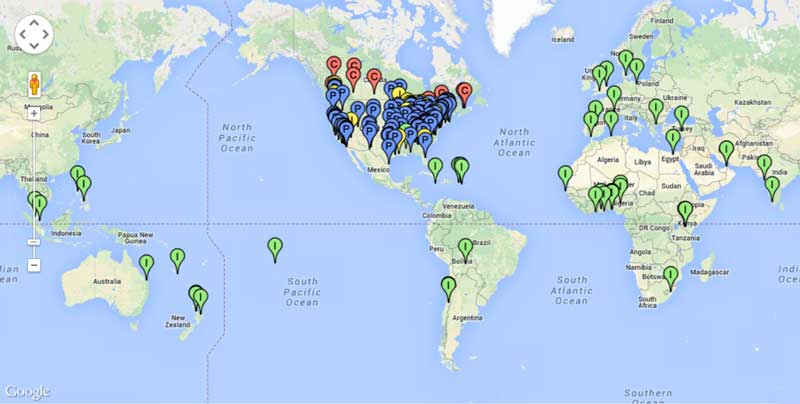
FOA's Approved Schools are worldwide
FOA also works directly with organizations involved in fiber optic projects to create workforce development programs to train new fiber techs.
In 2006 when Verizon was just starting their FiOS fiber to the home (FTTH) programs, they contacted FOA to help recruit contractors and train techs for this unique new aspect of fiber optics. FOA worked with Verizon to develop training programs, publicize the job opportunities and even held regional meetings to create interest and recruit workers.
Another example is in the state of Kentucky. When the state government began funding "Kentucky Wired' a fiber optic backbone for the state (because no current service provider would), there were practically no fiber techs in Kentucky. In 2016, FOA helped organize the state, the project contractors and the Kentucky Community and Technical College system to create 9 training programs across the state for fiber optic techs. In only 5 years, these programs trained and certified 1,200 CFOTs, many retrained from low paying rural jobs. The graduates of those programs are many of the workers who have successfully built Kentucky’s state of the art fiber optic system and are now building connections to the state backbone in their own regions.
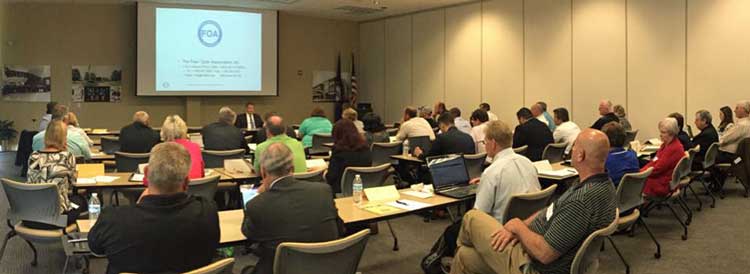
FOA hosts the 2016 Kentucky Wired Summit with attendees from the state, contractors and schools
FOA is ready to help create workforce development programs using our experience with programs like these and many others.
We’ve created the information needed to help workforce agencies understand fiber optic workforce development and implement a program using current resources to develop a local workforce capable of building the networks that can be funded under these new programs. FOA has extensive experience dealing with state technical and community colleges and technical high schools to create programs to train workers in fiber optics and related topics. FOA can provide the curriculum, guidance on setting up programs and train and certify instructors needed to start these programs.
What About People In Your Agency? They need to know about fiber optics too.
If your agency is going to be the intermediary in this broadband funding program, don’t you think it would be better if you understand the broadband technology – mostly fiber optics – yourself? FOA can help there too. We have instructors all over the US who can give an introductory course to fiber optics to your agency, but we also have available free online courses at Fiber U, the FOA online learning site. With the Fiber U courses, your people can learn about fiber optics and broadband online at their convenience, even getting a Certificate of Completion to show they have mastered the topic.
The Fiber Optic Workforce
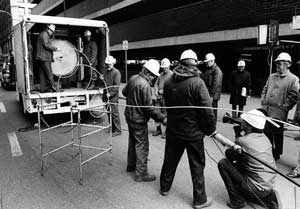
AT&T installs the first field trials of fiber optics in Chicago, 1977
When the first fiber optic networks were built over 40 years ago, Ph.Ds. from Bell Labs were in the field doing the installations. During the 1980s and 90s it was techs experienced in installing telecom copper cables who were taught fiber optics by their employers. But today, it's everybody: electricians, IT and security techs, cable guys, and lots of people who learned in school or changed careers to become fiber techs. Fiber optic installation is not “rocket science,” it’s a trade that can be learned in a “boot camp” and perfected by OJT – on-the-job-training – or as part of an apprenticeship program.
We're now a couple of generations of workers into fiber optics. Practically everybody from the beginning has retired, including many of those who learned the trade working for traditional telephone companies. Today's fiber tech probably started in some role in communications and learned fiber optics because their work required it. They may have taken a class to learn the basic knowledge and skills, then honed their skills with OJT. Or maybe they just learned on their own as needed. They may work for a communications or other high tech company, a city or government agency, a security company, a bank or just about any other commercial organization. Or, as is more common, they may be independent contractors who move from job to job.
What is a fiber optic tech?
The fiber optic tech is not just one type of worker. They are the designers of the fiber optic network who convert communications needs into plans for the fiber optic network that gets built. They are the field techs who install cable, splice and test it, to ready it for use. They are the techs who install communications equipment and maintain it. They are the techs who operate the network and, if necessary, repair it when damaged. Each of these types of workers should have a basic knowledge of fiber optics and the specialized skills related to their job function.

Fiber optic techs on the job
What kinds of work do fiber techs do?
The designers of fiber optic networks are responsible for taking needs for communications and turning them into plans for a network that can supply those needs. They understand how communications networks work, their architectures, and requirements. Much of the work of a designer is involved with the fiber optic cable plant – what we call the network of fiber optic cables that connect the network. The designer has to understand how fiber optic cable plants are installed – underground, aerial and/or indoors – depending on the geography of the routes. They know how to turn this into drawings, plans and schedules that are needed by the installers to build the cable plant successfully.
Most fiber techs are the workers who install the fiber optic cable, underground, aerial or indoors. They splice and terminate cables and test their work. Most of the work is outdoors and cable installation is often real construction work, digging trenches and pulling cables, adding cables to utility poles, etc. Splicing, terminating and testing fiber optic cable however is very specialized work that requires learning specific skills which is why skilled fiber optic workers are in great demand and well paid.

What is a fiber optic technician? What kinds of work do they do? Those topics were the center of FOA discussions with the US Department of Labor Bureau of Labor Statistics that led to the new job category of "Telecommunications Technician" on the BLS website. The focus of this job category is primarily the installation and operation of the fiber optic cable plant, but one should not forget the cable plant must be designed also as part of a more extensive communications network.
Here is how FOA defines these stages of a project and the skills of the techs. This is not unique to FOA; it's what has been traditional at telecom companies forever.
Planning and Design: Once needs for a communications network is established, project managers will be responsible for all the details of the project while experienced fiber techs trained and experienced in fiber optic network design (CFOS/D) will design the cable plant itself. (FOA Guide - Design)
Construction: Aerial cable plants may require installing new poles or doing make-ready on existing poles and messengers. Underground construction requires trenching and installation of ducts. In many cases the actual construction is done by general construction workers, as the construction work in many cases is not unique to fiber optics. Heavy machinery is required for much of the construction work and training is focused on safety as well as operating the machinery. (FOA Guide - Construction)
Fiber Optic Cable Installers: Once the route is prepared, the fiber optic cable can be installed. Aerial cable installation depends on the type of cable. Regular OSP cable, figure 8 cable and ADSS cable requires special hardware and installation techniques so the techs must understand the process appropriate for each cable. (FOA Guide - Installation)
Splicers: Since the beginning, fiber techs have been called "splicers" because that was the original job unique to fiber optics. Construction and cable installation was not very different from earlier copper cables, but splicing was very different. Even today, fiber techs are often called splicers and splicing is a core skill for any fiber tech whether they are joining cables or terminating them. (FOA Guide - Splicing)
Testers: After the fiber optic cable is installed and spliced, it must be tested. Testing goes together with splicing since every splice will be tested, often as soon as it is made so if it needs redoing, it should be done before the splice closure is sealed. (FOA Guide - Testing)
Network Operators: Once the cable plant is built and the communications equipment installed, it needs techs who know how to operate the comms but may only know how to connect new gear or change connections on current gear. These techs should also know how to troubleshoot systems in an outage and either do the restoration themselves or call a tech who can. (FOA Guide - Operation)
These categories merely define the stages of installation of a fiber optic project. Of course there are subsets of these categories and most fiber techs are expected to have skills and jobs that cross into multiple groups, as FOA has defined in the KSAs (knowledge, skills and abilities) for a CFOT.
What an individual worker does differs according to their job. An independent fiber contractor may cover every job except operation and a FTTH subscriber installation tech may only understand installing cables, testing and connecting equipment within the scope of FTTH systems. A construction company may handle the trenching and even pole setting as well as parts of the traditional fiber work.
The FOA defined its role early on to focus on educating and certifying techs in the fiber specific skills: cable installation, splicing, testing and restoration. FOA would like to see more schools get into the construction phase, especially for newer techniques like microtrenching and blowing cable, but these require large outdoor areas for training and large investments in equipment. Most techs who learn these processes now do it with OJT - on-the-job-training - and hopefully get OSHA training for safety.
What is the fiber optic workforce?
The fiber optic workforce of today is mainly composed of workers who learned fiber optics as part of their current jobs. While some work for communications companies, cities, utilities or contractors, many are contract workers who follow the work because fiber optic jobs are often short-term projects.
In the past, many began as employees of telcos or large contractors, often taking early retirement and continuing working on the fiber optic projects because they loved the work. Most of those people are retired now. Today’s workers are often not from the telcos but may be electricians, cable guys, IT or security techs or just anyone who learned fiber optics because they needed to use fiber in their work.
An important point is that working in fiber optics is not like learning specialized skills such as computer programming – it is more hands-on skills than intellectual exercises. A fiber tech has some basic knowledge of the technology at the 8-10th grade level, but the focus is on developing manual skills and learning how to operate the equipment needed for installation. It’s a hands-on job.
Fiber optics work isn’t “rocket science” – it’s a trade that can be learned like any other – carpentry, electrical, plumbing, construction. FOA schools have retrained laid-off workers like coal miners to become fiber techs.
Where do you recruit new workers to the field?
In today’s job market where there are two openings for every worker looking for a job, recruiting is not easy. There’s plenty of work in fiber optics and it is good work that pays very well. It should be easy to attract workers if they understand what a fiber tech does and what the opportunities are.
But to gain more workers, we need to expand recruiting. We need to work with technical colleges and even high schools. FOA has been working for years to introduce fiber optics in schools. We have programs for k-12 and STEM teachers to include in science classes or trade programs. We provide free samples of fiber optics and instructions for class demonstrations. We have a section on our website about careers in fiber optics and videos on the work done by a fiber tech to show interested students what a fiber optic tech does on the job.
We have yet to convince guidance counselors that it’s a better option for many students that were thinking about going to college. Perhaps the current situation – and prominent business leaders like Jamie Dimon of JPMorgan Chase Bank encouraging young people to join the trades - will facilitate that change.
FOA works with unions and trade associations to promote fiber optics. FOA has worked with the IBEW electrical union since our beginning, and they use our fiber optic certification program as part of their apprenticeship program. The CWA communication workers union uses FOA schools to train workers for the telcos. FOA even works with organizations like IMSA, the traffic engineers professional society, to provide fiber training. All of these groups do their own recruiting and help introduce fiber optics to the younger generation.
FOA also has experience working with organizations focused on job retraining, including those from industries affected by technology, urban and rural areas of low income without industry, native Americans and First Nations in Canada and the incarcerated.
Another source of fiber techs is one that few consider. Only about 3% of the fiber optic workforce are women, in spite of the fact that experience shows they are well suited to the work. Last year, FOA interviewed a group of female fiber techs in Alaska. These women loved the work and the feeling of accomplishment it provided and all wanted more opportunity for OJT – on the job training - to improve their skills. It may take some unconventional thinking, but it's an opportunity that should not be overlooked.
The New BLS "Telecommunications Technicians" Web Page
And Its Meaning For The Telecom/Fiber Workforce
FOA has been working with the US Department
of Labor (DoL) Bureau of Labor Statistics (BLS) for about 20 years to
define the jobs of fiber optic technicians. When fiber optics was first
added by the BLS, fiber optic techs were placed in a category of
"electrical linemen," an age old category for workers who install
cables. This year, in part due to the federal focus on broadband, FOA
was contacted by a BLS analyst who said there was interest in creating a
new category.
FOA worked with BLS for months drafting new job descriptions, brought in
some contacts from the Communications Workers of America (CWA),
suggested adding wireless techs who were also buried elsewhere in the
BLS job definitions to create a new category at BLS for
"Telecommunications Technicians."
The New BLS "Telecommunications Technicians" Web Page.
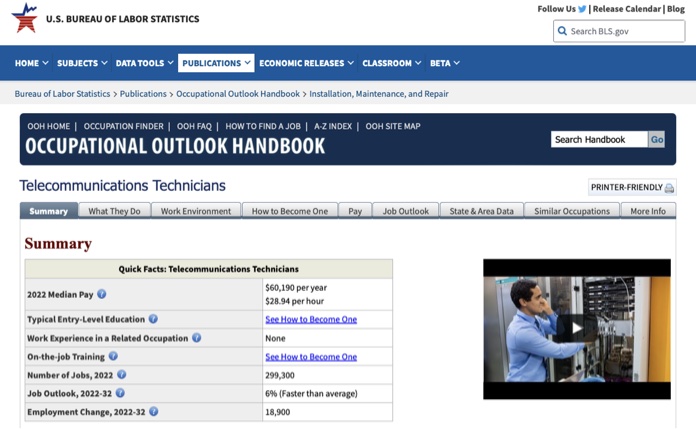
The Summary page provides an index of the information on Telecom Techs and links to the relevant pages. By using their enormous database of job statistics, they came up with what is probably the most reasonable estimates of the telecom workforce.
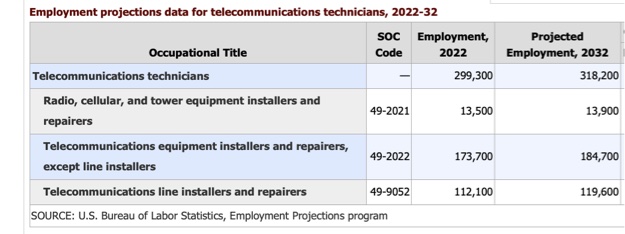
The US Bureau of Labor Statistics has released an update on statistics for the US labor force with comprehensive data on numerous categories. It's an interesting report to study. The most interesting category is
NAICS 517 Telecommunications. From the data, we extracted this data on the workers installing telecom cable plants.
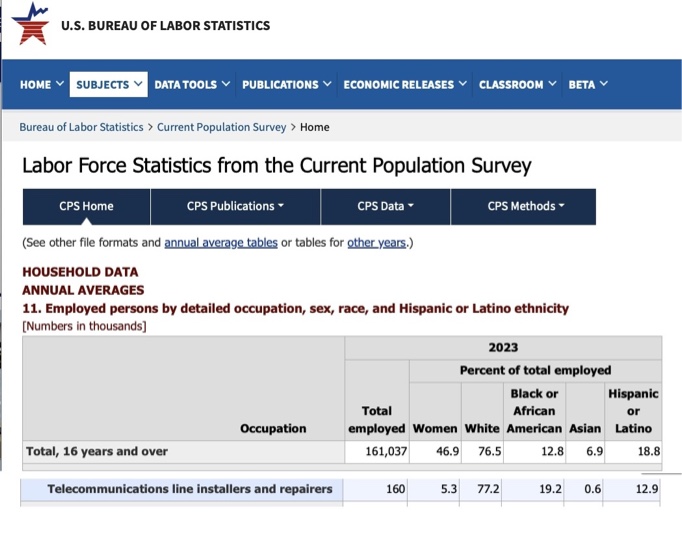
Note the telecom workforce has a large deficit of female workers, something we are very aware of and are working to rectify. The statistics on the other categories tells us we need to work harder recruiting.
How Do Fiber Optic Techs Learn?
To develop a fiber optic workforce, it’s important to know how fiber techs learn and that knowledge is essential to understand how to get them trained and certified. The FOA has 25+ years’ experience in the development of a certified fiber optic technician workforce. FOA-Approved Schools have hundreds of instructors who have experience working in the field as techs themselves as well as training others. All this experience has contributed to development of the FOA's programs.
FOA has learned that techs learn by three methods: classroom training, online learning and OJT – on the job training - and generally a combination of all three.
Techs with experience working with communications or electronics gear are always familiar with cables, so to them fiber optics is just another type of cable. They will generally prefer a short course, often called a “boot camp,” or an online course like the free courses FOA offers at Fiber U to learn the basics of fiber optics. Then they usually get the equipment they need and learn on their own. Suppliers of fiber optic equipment usually provide some training when you buy equipment, and, for an experienced tech, that is sufficient.
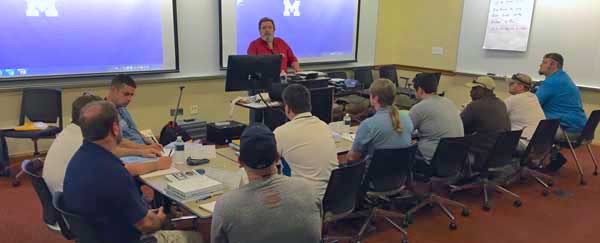
FOA Approved School Techtricians conducts class for the IBEW Joint Apprenticeship & Training Committee
Novices who have no experience with high-tech equipment need more training, a combination of classroom courses with an experienced instructor to gain the knowledge and hands-on labs to gain the basic skills used in fiber optics. Even novices can learn the basic knowledge and skills in a class over a week or two. It’s not enough to be an expert installer but enough to be ready for OJT under an experienced supervisor. Field experience, with lots of repetitions of basic processes like pulling cable, splicing and termination, is what develops high-level skills.
Apprenticeship programs are a great way for novices to get into fiber optics. The FOA has worked with the IBEW/NECA electrical apprenticeship program for over 25 years and has over 30 JATCs offering FOA fiber optic training and certification to their apprentices. Apprenticeships work well for unions and experienced organizations like the IBEW and NECA who have been doing it for nearly a century, or with large companies who hire techs. Apprenticeships are not as easily implemented in a business like fiber optics where many of the workers are contract workers who move from job to job regularly.
Training novices using the FOA curriculum has them begin with the basic online course at Fiber U to become familiar with fiber optics, then take a short course that is about 50/50 classroom and hands-on labs. Working under an experienced supervisor will help develop skills and Fiber U is always available for review and learning new topics.
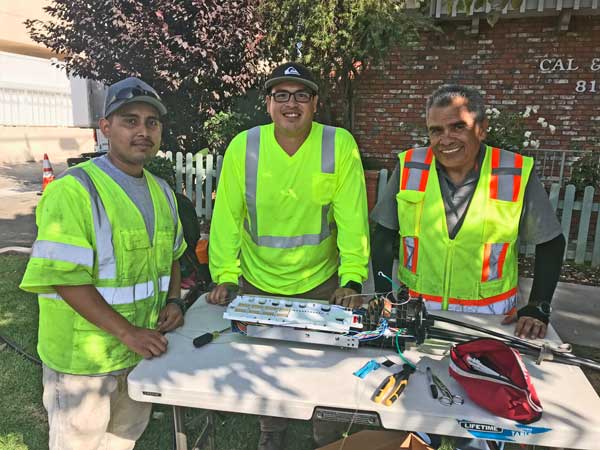
On-the-job-training (OJT) works best with an experienced mentor
Certification From OJT (On-The-Job-Training)
Sometimes experienced techs need certification but don’t need the basic training aimed at novices. For them, FOA has a “Work-to-Cert” program that recognizes their field experience and provides free online courses at Fiber U to help prepare them for FOA certification exams. Novices can take a similar path using the FOA “OJT-to-Cert” program where they complete the online course at Fiber U and work under supervisors to get at least a full year of field experience.
FOA’s Experience Starting Training Programs
FOA has helped hundreds of organizations create training programs worldwide. Those organizations include technical high schools and colleges, universities, government agencies, telecommunications companies, manufacturers, trade unions, professional societies and independent professional trainers.
Remember the FOA does not offer training classes itself; that’s done by our network of approved training organizations. We are a professional association and certifying body that creates the standards for training and certifying fiber optic techs. We follow international standards for a certifying body – ISO 17024 – that ensures the quality of our programs. FOA controls the quality of these certification programs which are only taught by FOA Certified Instructors at FOA Approved Schools.
FOA provides assistance for our schools by creating the reference materials needed for education – books, online reference material, videos, etc. We also set standards for training, provide a basic curriculum which the school can adapt for their students and offer online courses for blended learning – a combination of online and classroom training used by many training programs today.
We already have a network of FOA-Approved schools all over the US who can work with you to set up and deliver training programs for fiber optic techs, but we can also offer assistance in creating your own local programs.
Fortunately, all states have a network of community and technical colleges that are capable of developing this fiber optic technician workforce. These schools can work with current FOA-Approved Schools to begin continuing education programs or FOA can work with them to create their own programs, either as part of degree programs or continuing ed, using FOA curriculum and assistance.
The best example of utilizing existing educational resources is the Kentucky Wired program where FOA worked with the state to set up 9 programs around the state that have been providing techs to install the Kentucky Wired network since 2016. FOA has similar ongoing projects with other states also.
FOA can help you get started
If your state is interested in using your community and technical college system or workforce development agency to train the fiber techs you will need, the time to start is now. FOA has turnkey programs – we provide at no cost to the schools the curriculum and consult with the staff to set up the program to train techs to become FOA Certified Fiber Optic Technicians. Introduce us to your workforce development or technical college people and we can do the rest.
Contact FOA to get started.
Workforce Development Requires A Cooperative Effort
What is needed for a successful workforce development project? Based on the FOA experience with these programs., FOA believes a successful workforce development program requires the cooperation of a number of parties, all of whom have their own expertise and a vested interest in its success. These parties include:- The workforce development agency. They know how to create and operate programs and how to access funding from various sources.
- The customers - network owners and developers. They need the workforce to build their networks while meeting their time and financial goals.
- Employers - network owners and contractors. The can define the jobs and the qualifications for the workers they need plus where and when they are needed. The also pay the salaries so they define the job benefits.
-
Training organizations. At the local level, they are generally technical
high schools and colleges that are experienced in teaching trade skills
and offering certifications with degree programs. Professional training
organizations may provide bootcamp type training for areas where
schools cannot.
- The public. They need to be aware of the programs and help recruit people for the training, especially the young people who need encouragement to pursue a career in the trades.
FOA looks at this as the needs for developing a fiber optic technician workforce, but these parties are necessary for successful workforce development programs in any of the trades.
Certifying Fiber Optic Techs
When the Fiber Optic Association (FOA) was started in 1995 by a dozen founders from the industry, education and government, its aim was to create a fiber optic technician certification that would be appropriate across all applications of fiber optics. Today, FOA certifications are recognized by the US Department of Labor, government agencies, trade unions like the IBEW and CWA, major telecom companies and telecom ministries in countries around the world.
When FOA started, to know how to certify a fiber optic tech, we first needed to define the term “fiber optic technician.” The FOA founders, all of whom were currently training fiber optic techs, spent over a year developing the “KSAs” for a fiber optic tech. KSA stands for Knowledge, Skills and Abilities, a term used in many fields to define the qualities of a competent worker.
The FOA fiber optic KSAs (https://www.foa.org/KSAs.html) includes all aspects of fiber optics, from the basic technology of fiber optic communications through all aspects of fiber optic network installation: cable installation and preparation, splicing, termination and testing. While the fiber optic tech may work in many diverse fields on equally diverse projects, the KSAs are common requirements for any techs who work with fiber optics.
The "K" or knowledge part of the KSAs includes fiber optic jargon, the language of fiber optics, how fiber itself works, how communications systems use fiber, then the more practical knowledge of components and installation processes like splicing, terminating and testing.
The "S" or skills of the KSAs involve installing cable and preparing it for splicing and termination. Splicing and termination bring tools into the equation and students must learn how to use all of them. Likewise testing skills involve learning to use equipment that can be simple like visual fault locators or complex like OTDRs.
The "A" or abilities of the KSAs could also be aptitude, including the ability to use tools properly. Vision, for example, is an important ability for a fiber tech. Into this “A” category, some add attitude, having the qualities to become a reliable, productive worker.
Every FOA-certified CFOT (Certified Fiber Optic Technician) has met the standards of the KSAs. They have passed an exam on the knowledge required and demonstrated their skills and abilities, either in classroom lab exercises, work experience or completion of an OJT – on the job training – program.
The KSAs are really quite straightforward; similar to that of many skilled trades. It requires someone with a reasonable educational background (around 10th grade level) and the desire to learn manual skills. And they get to use some pretty cool tools too!
About the FOA
The Fiber Optic Association Inc. (FOA) was created out of a fiber optic training conference in the 1990s created by a fiber optic manufacturer called FOTEC. The conference was named “Fiber U” by a trade journalist to emphasize the comprehensive nature of the training. Fiber U brought several hundred participants together for a week of intense training by dozens of companies who were leaders in the fiber optic industry like Siecor/Corning, AT&T, 3M, AMP and many specialist suppliers of fiber optic equipment.
At the 1995 Fiber U, the instructors decided it was time to create a professional society for fiber optics, so they did. The Fiber Optic Association Inc. was incorporated as a non-profit educational organization. Its charter, as stated in the original incorporation documents, was “to promote professionalism in fiber optics through education, certification and standards.”
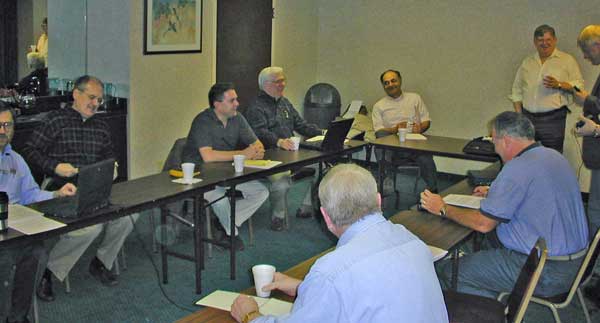
FOA Board Members meet in 1997 to define the FOA CFOT certification.
Today, the FOA still follows that charter. We defined the qualifications for a fiber optic tech and to date (2022) have certified almost 90,000 fiber optic techs worldwide – the techs who build and operate the communications networks you use today. FOA certifications are recognized by the US Department of Labor, other military and government agencies, major telecommunications companies, trade unions as well as many telecommunications authorities worldwide.
Since there were no textbooks for fiber optic installation, FOA created its own, now offering 12 books in 4 languages. We created a technical website of almost 1,000 pages of information (FOA Guide) that is the most widely used information base in fiber optics – around 4 million page views per year. We have about 120 videos online that have been viewed about 3 million times.
We use our own knowledge base to create an online learning site, called Fiber U naturally, with more than 2 dozen courses that can be used for online learning or blended learning as well as preparation for FOA certification tests.
FOA certification is offered through a network of FOA-approved schools. There are over 135 approved schools in the US and another 80 around the world. These training organizations include technical colleges and high schools, union apprenticeships, professional societies, manufacturers and independent professional trainers.
As a non-profit created by the industry to develop a competent workforce, FOA provides everything except the printed textbooks free to all, and even the textbooks are inexpensive. Our organization was one of the first started in the era of the Internet and we began operating as a “virtual” organization. FOA is still a virtual organization with worldwide participation. With our low overhead, our expenses are covered by certification fees and book royalties, allowing us to offer all our services at no cost.
As a result, FOA has become the trusted source of technical information for the fiber optic industry worldwide. Our curriculum materials are available free to the training organizations we approve. We have programs to train and certify the instructors presenting FOA certification courses to ensure the quality of instruction.
For an organization that wants to offer fiber optic training, FOA can provide the guidance to get started, the technical expertise to help create the program and the certification.
For the whole fiber optic workforce, FOA has a "Jobs website" that helps them understand the jobs available in fiber optics and how to find them.
FOA Resources
The FOA's charter is to "promote
professionalism in fiber optics through education, certification and
standards." Below are some of the resources we provide free to everyone
interested in fiber optics.
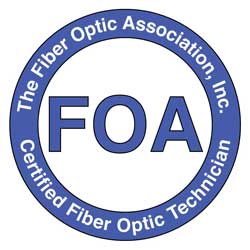
FOA Certifications
FOA is a certifying body for fiber optic technicians. The FOA CFOT Certified Fiber Optic Technician is only one of the FOA certifications for technicians working with fiber optics applications. Other certifications include premises cabling, fiber optic installation skills and fiber optic applications. FOA certifications may be obtained by attending a class at an FOA Approved School or participating in a "Work To Cert" program for experienced techs or an "OJT To Cert" program for novices.
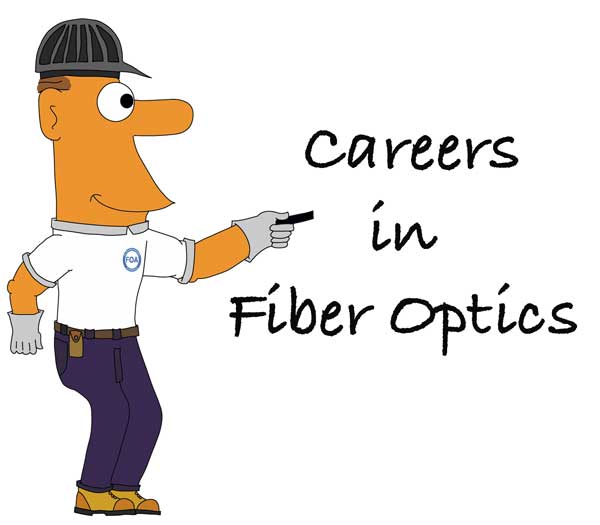
FOA has a YouTube Video on "Careers in Fiber Optics" and a "Careers In Fiber Optics" Website.
Interested in exploring a career in fiber optics? FOA has created a YouTube Video and a webpage that describes what a fiber optic worker does, where they work and how to get started. It's mainly aimed at high school students but it's relevant to anyone interested in changing careers also.
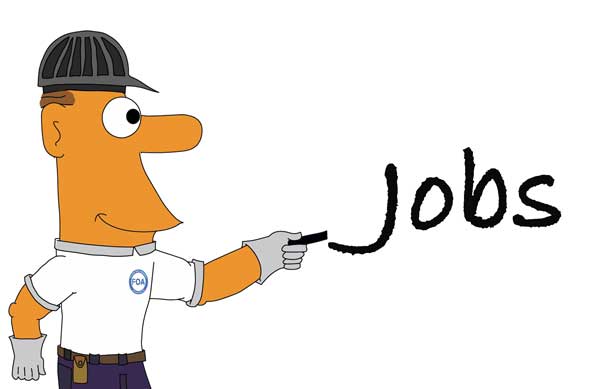
We get many questions from CFOTs, students at FOA-Approved schools and others contemplating getting into the fiber optic business regarding jobs in fiber optics - and how to find them - so we’ve created a new web page Finding a Job in Fiber Optics and a video Where Are The Jobs In Fiber Optics? to share some information we've gathered about jobs in our industry. The information is designed to help you understand what jobs are available in fiber optics, how to find them and apply for them.

Resources for Teachers
Are you a STEM/STEAM teacher? FOA has resources for teachers at all levels. We have videos and classroom aids to show students of any age the "magic" of fiber optics. We also have information on jobs in fiber optics and curriculum for older students looking for a career.
Resources for Teachers

The FOA Reference Guide is the collection of free technical resources offered by the Fiber Optic Association Inc. for everyone in fiber optics to find technical information and directions on the design, installation and operation of fiber optic networks. The FOA Reference Guide contains almost 1000 pages of technical information on all aspects of fiber optic network design, installation, test and operation provided by FOA advisory board members from around the world. Basic fiber information is available in Spanish, French and Portuguese also.
FOA Reference Guide Table of Contents
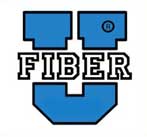
Fiber U is FOA's learning site, offering dozens of free online self-study courses for everyone in fiber optics. Take a basic course in fiber optics, premises cabling or a short MiniCourse on specific topics, all free. Get a Certificate of Completion when you finish.
Fiber U Free Online Courses

FOA Textbooks
Prefer printed books for study and reference? FOA has them, covering basic fiber, premises cabling, outside plant fiber optics, construction, network design and test - a dozen in all in 4 languages.
FOA Textbooks

FOA Videos
Like to get your information in videos? FOA has over 100 YouTube videos, with 60+ Lectures and even more technical demonstrations.
FOA YouTube Videos

FOA is the Fiber Optic Association Inc., the international professional organization of fiber optics, founded in 1995 to promote professionalism in fiber optics through education, certification and standards. FOA CFOT certification is the recognized certification for fiber optic techs worldwide.
FOA Home Page